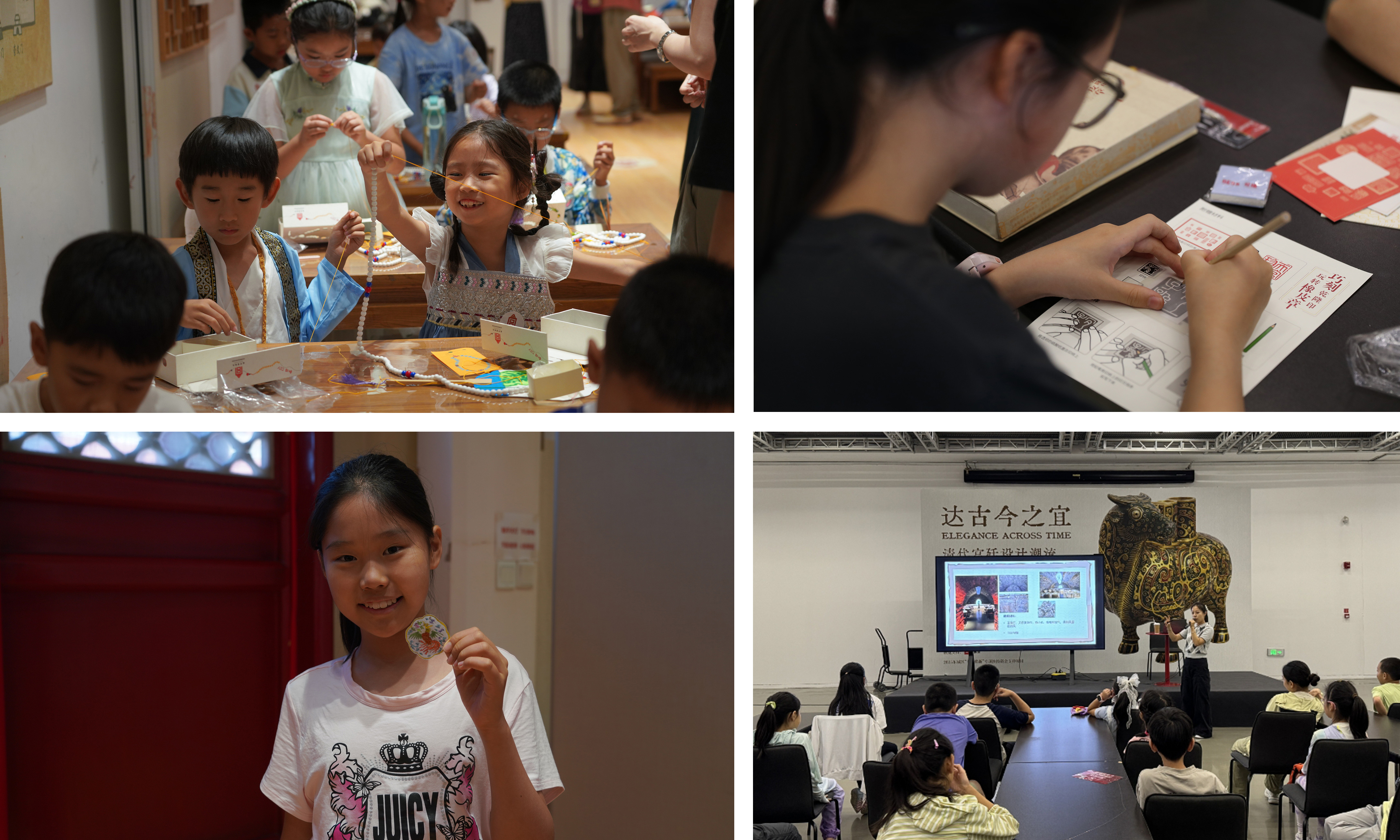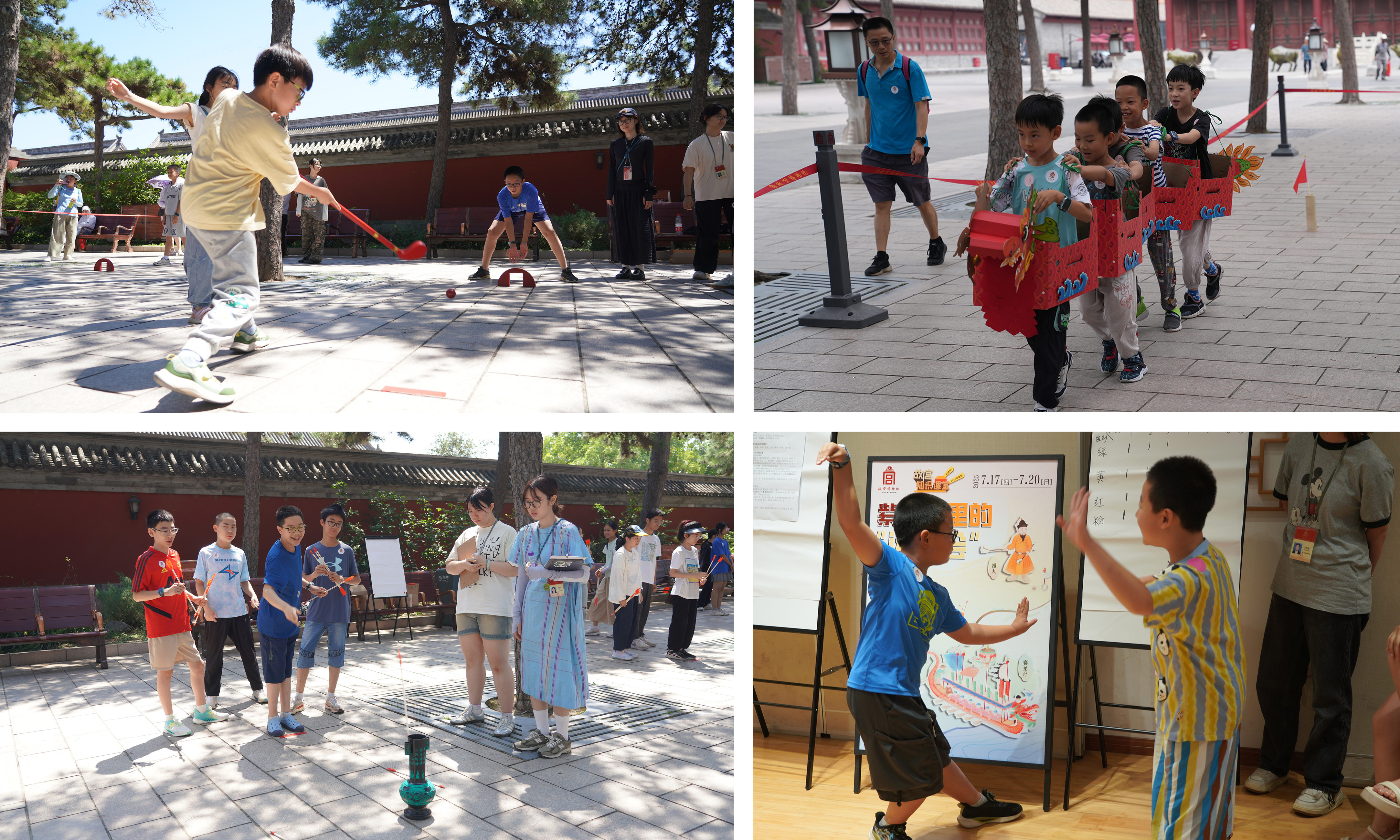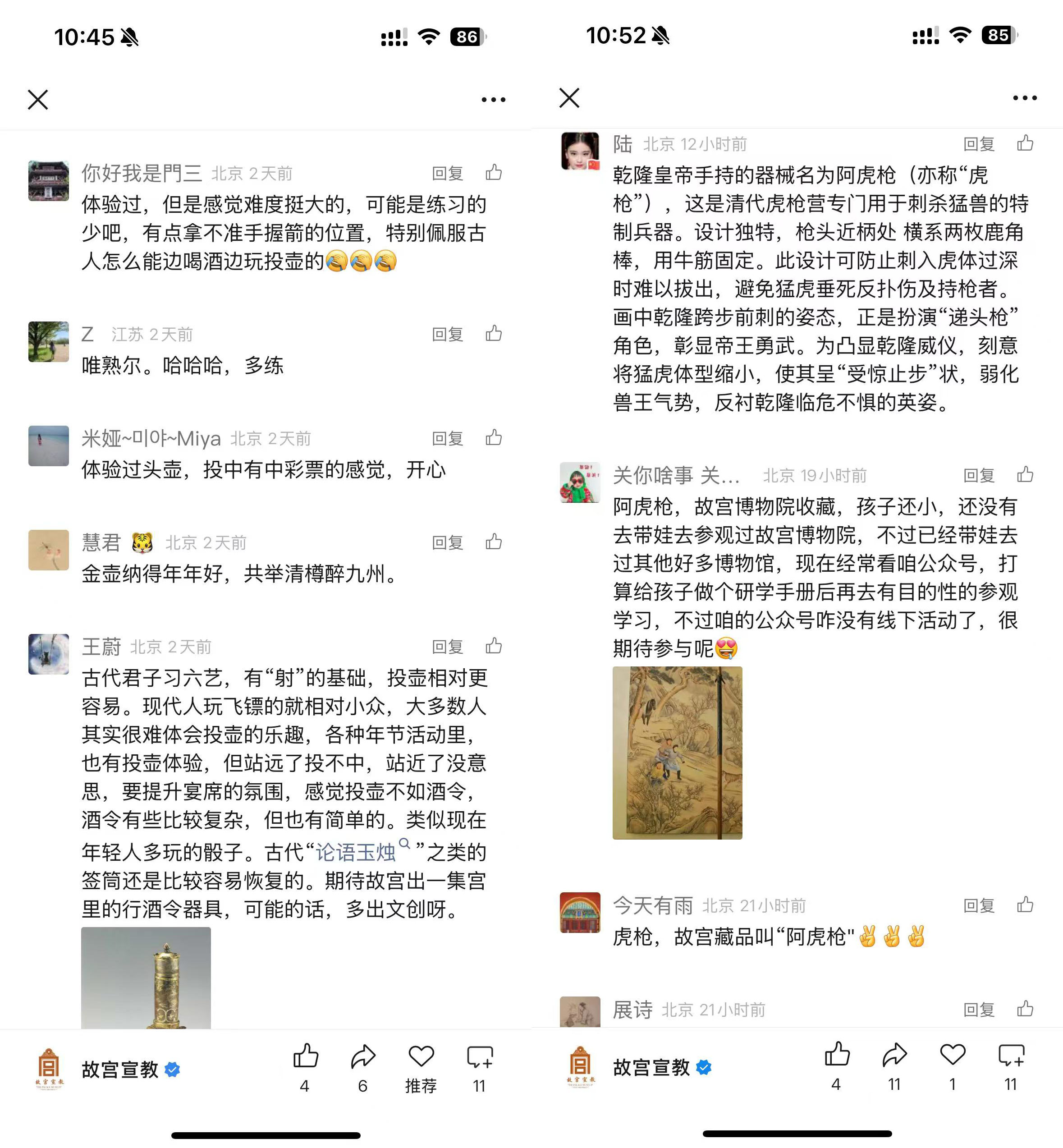As the summer season winds down, the Palace Museum’s 2025 Summer Knowledge Program, a highlight for many students, has successfully come to a close. With the museum approaching its 100th anniversary, this year’s summer program built upon the winter curriculum, featuring two main themes: “The Architecture and Artifacts of the Forbidden City” and “Sports Meet in the Forbidden City.” The program offered a blend of online and in-person learning. From July 17 to 20, eight on-site classes provided students with a direct and engaging museum experience. Following this, an eight-episode series of short online videos was released from August 6 to 13 across multiple platforms, including Douyin, Weibo, WeChat, Toutiao, Xinhuanet.com, CCTV.com and the Palace Museum’s youth website. These videos garnered over 4.4 million views.
Here’s a review of the program’s highlights.
A Return to the Classics: Experiencing History and Artifacts
The “Architecture and Artifacts of the Forbidden City” series featured four of the museum’s most popular educational courses, combining classroom lectures, hands-on workshops, and exhibition tours to take students on a journey into the past. In the “Colors of the Eaves” workshop, students learned about the artistic features of the Palace Museum’s ancient architectural paintings before creating their own shrink-plastic key chains, capturing the vibrant patterns in their miniature crafts. The “DIY Court Beads” workshop focused on Qing court etiquette and attire, with participants stringing their own unique accessories.
Two other workshops, “Carving Qianlong’s Seals” and “Keeping Cool in the Palace,” were held at the Guardian Art Center. In the first workshop, students discovered the story of the Qianlong Emperor, an avid collector of seals, and then tried their hand at carving their own rubber stamps, experiencing the traditional scholarly pursuit of expressing oneself through seals. In the “Keeping Cool in the Palace” workshop, participants learned about clever ways the Qing court beat the summer heat and then painted their own elegant designs on glass ice cups.

Students enjoy a hands-on cultural workshop
A key feature of the program was its integration with current exhibitions. The “Colors of the Eaves” workshop was connected to the “A Thousand-Year Legacy of Caihua” exhibition, while the “DIY Court Beads” class included a tour of the Treasury Gallery. The “Carving the Qianlong’s Seals” and “Keeping Cool in the Palace” workshops were linked to the “Elegance Across Time” special exhibition, a project co-hosted by the Palace Museum and the Guardian Art Center. These tours allowed students to observe the artifacts up close, transforming historical knowledge from books and lectures into a tangible and living experience.

Students visit the exhibition and get a closer look at the artifacts
An Innovative Experience: Connecting with the Past through Sports
The “Sports Meet in the Forbidden City” series, a newly developed educational program by the Palace Museum, drew inspiration from ancient texts and paintings. Combining lectures with outdoor activities, the courses allowed students to experience traditional sports through games and competitions.
This summer, the program featured four classic Chinese sports: chuiwan (a game similar to golf), touhu (a game of throwing arrows into a pot), dragon boat racing, and martial arts. After learning about the history of these activities, students gathered in the Palace Museum’s Archery Pavilion area. They practiced their swings in chuiwan, channeling the “golfing fever” of the past. They took on the role of ancient scholar-officials, experiencing the blend of ceremony and skill in touhu. A simulated dragon boat race relived the excitement of ancient tournaments. In a martial arts session, students practiced fundamental moves like the horse stance and punch, showing their own unique take on this traditional practice.

Students have fun at a sport meet held in the Forbidden City
Looking Ahead: Bringing Cultural Heritage to Life
The Palace Museum Knowledge Program, a long-standing educational initiative, continued in the summer of 2025 to explore new approaches to museum learning, especially in the lead-up to the museum’s centennial. Through hands-on workshops, direct engagement with artifacts, and an outdoor sport meet, the program extended learning beyond the classroom. The complementary online video series, which featured content and lengths tailored for today’s social media platforms, helped make cultural and historical learning accessible to a wider audience online.

Students engage in the online program
The Palace Museum’s educators remain dedicated to preserving cultural heritage while exploring innovative ways to bring traditions to life. In the future, the museum will continue to develop diverse educational programs to foster a deeper connection between the public and fine traditional Chinese culture.



